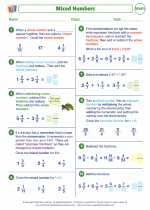Mixed Numbers
A mixed number is a combination of a whole number and a proper fraction. It is usually written in the form:
Whole Number + Fraction
For example, 3 1/2 is a mixed number where 3 is the whole number and 1/2 is the fraction part.
Converting Improper Fractions to Mixed Numbers
To convert an improper fraction to a mixed number, you need to divide the numerator by the denominator. The whole number part of the mixed number will be the quotient of the division, and the remainder will be the numerator of the fraction. The denominator of the fraction remains the same.
For example, to convert the improper fraction 7/2 to a mixed number:
7 ÷ 2 = 3 with a remainder of 1
So, the mixed number is 3 1/2
Converting Mixed Numbers to Improper Fractions
To convert a mixed number to an improper fraction, you need to multiply the whole number by the denominator and then add the numerator. The result becomes the new numerator for the improper fraction, and the denominator remains the same.
For example, to convert the mixed number 4 2/3 to an improper fraction:
4 × 3 + 2 = 12 + 2 = 14
So, the improper fraction is 14/3
Adding and Subtracting Mixed Numbers
When adding or subtracting mixed numbers, you first add or subtract the whole numbers and then add or subtract the fractions separately. If the fraction part of the sum or difference is an improper fraction, you can convert it to a mixed number.
Multiplying Mixed Numbers
To multiply mixed numbers, you can first convert them to improper fractions, then multiply the numerators and denominators separately, and finally convert the result back to a mixed number if necessary.
Study Guide
- What is a mixed number?
- How do you convert an improper fraction to a mixed number?
- How do you convert a mixed number to an improper fraction?
- What is the process for adding and subtracting mixed numbers?
- What are the steps for multiplying mixed numbers?
◂Math Worksheets and Study Guides Sixth Grade. Mixed Numbers
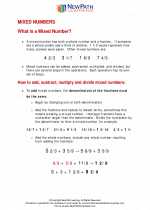
 Worksheet/Answer key
Worksheet/Answer key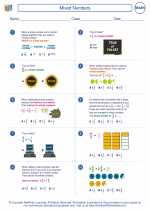
 Worksheet/Answer key
Worksheet/Answer key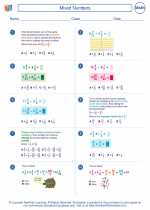
 Worksheet/Answer key
Worksheet/Answer key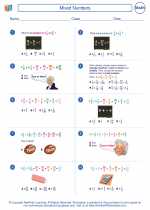
 Worksheet/Answer key
Worksheet/Answer key